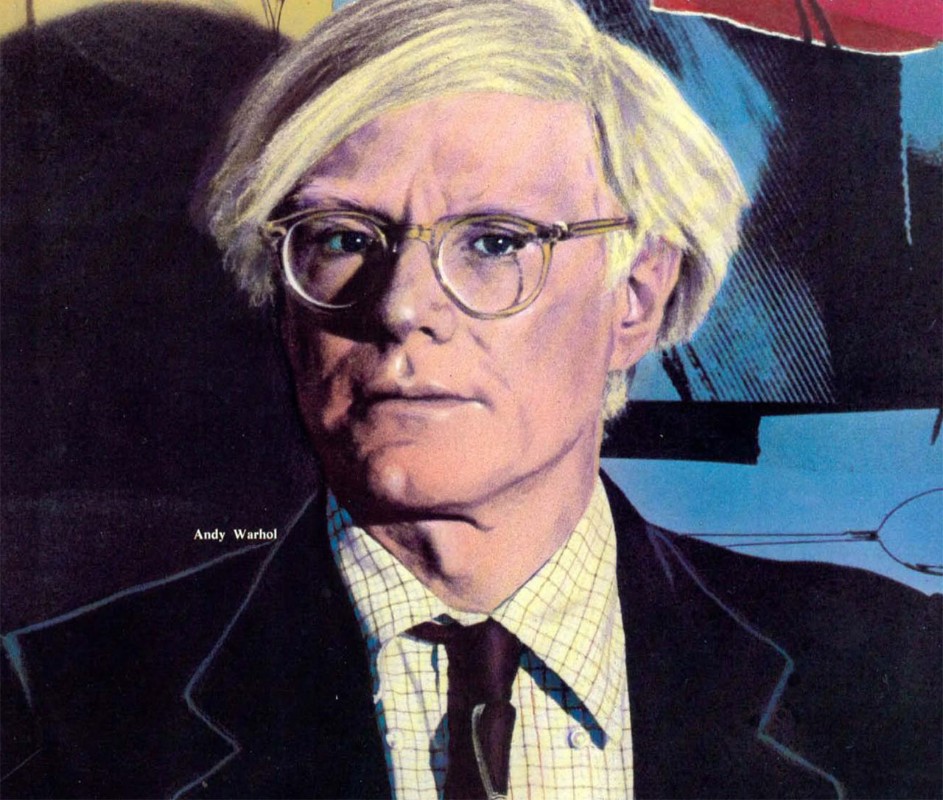It is October 1967, Che Guevara had been captured and executed, the Pink Floyd were publishing their first album and in Southeast Asia the Vietnam War was still going on. Alejandro Aravena and Tokujin Yoshioka were born that year and the Protests of 1968 were about to happen. In the pages of Domus 455 the historian and art critic Tommaso Trini writes about an exhibition in Venice much talked-about in that time, titled “Campo Vitale”, at Palazzo Grassi.
The article is named Visivi, Vitali, Visionari (Visual, Vital, Visionaries) where he compares two generations: one that represents the age of anxiety, negation, satire and the struggle against man’s depersonalization. The other that symbolizes the age of acceptance, coldly assimilating the “conspicuous images of a reality that is on its way to radical transformations”: the Pop artists. Andy Warhol is here and exposes the paintings from the period of “death” (the Atomic bomb and Kennedy’s funeral) and the “portraits” (the thirty Mona Lisas that are better than one).

“Andy Warhol was in Milan, a month before his death, for the opening of his exhibition of photographic transfers inspired by The Last Supper. We lunched together on that day, and without dropping his ironic phlegm, he asked me: ‘Pierre, do you think the Italians will understand my immense admiration for Leonardo?’. It is remarks like these that feed great legends. And the Warhol legend is in the image of America: a nation the size of a continent. In hoisting himself up to the level of Picasso and Dalì on the star system’s prize-list, Warhol eclipsed all the artists of the second half of the 20th century.”
These are the words of Pierre Restany on Domus 798, November 1997. In his article The superstar painter: hero and martyr of global culture he looks at the perverse effects of global communication in the art world.

In a conversation from 2005 (Domus 878) with Dutch designer Joris Laarman and Stefano Boeri (Domus director in those years), Vico Magistretti uses Warhol to explain his approach to design.“What I like in design is automatically connected to what I know about the industrial process, based on my experience. Andy Warhol also had the idea that repetition was quality.”
I thought that young people had more problems than old people, and I hoped I could last until I was older so I wouldn’t have all those problems. Then I looked around and saw that everybody who looked young had young problems and that everybody who looked old had old problems. The “old” problems to me looked easier to take that the “young” problems. So I dyed my hair gray when I was about 23 or 24.
“Dear Andy, the siren of the new Triennale is sounding for you too. I know that you’ll come to present your “person” inside our wandering ship. This is very important: the Triennale stands for a past of abandoned values but you, bright modern antihero, represent the awareness that architectural design lives within a no-illusions labyrinth made up of paraphrases, of cunning, of falsity and vagueness.”
An extract from Alessandro Mendini’s editorial published as an open letter to Andy Warhol on Domus 603, February 1980. The occasion is the reopening of the Triennale di Milano in its sixteenth edition, after six years of silence.

Domus offered an overview on Andy Warhol’s work in its farewell published two months after his death, on February 1987. It is Domus 682, directed by Mario Bellini.
“Andy Warhol – his real name was Andrew Warhola – was born in Pittsburgh, Pennsylvania, in 1930 (it may have been 1928, the date is uncertain). His parents had emigrated there from Czechoslovakia just ten years earlier. Warhol received his Bachelor of Arts from Carnegie Institute in his hometown; he then went to New York where he found a job drawing shoes for the Glamour Shoe Factory. One of his very first shows was devoted to these early shoe drawings. At that time, Warhol’s drawings were characterized by thin lines; his extravagant style changed abruptly when Pop art exploded on the scene. Warhol soon became one of the leading Pop artists, together with Robert Rauschenberg, Roy Lichtenstein and Claes Oldenburg.”

“I used to like Warhol but no more. His new paintings are not constructed properly. The over-wash of red paint is ineffective and obvious and rather pointless.”
It is Xante Battaglia speaking while he talks to Gregory Battcock on his latest exhibition “Cubes” at the Bonino Gallery in New York, during the opening event. The pages of Domus 569 talk about prefab concrete, discos, tensostructures, communities for the elderly, circular offices and roof gardens. It is April 1977 (yes, fifty years ago) and the magazine is directed by Gio Ponti and Cesare Maria Casati.

In Domus 553 a review on Andy Warohl’s The Philosophy of Andy Warhol book offers a sriking extract on why Warhol dyed his hair gray.
“I thought that young people had more problems than old people, and I hoped I could last until I was older so I wouldn’t have all those problems. Then I looked around and saw that everybody who looked young had young problems and that everybody who looked old had old problems. The “old” problems to me looked easier to take that the “young” problems. So I decided to go gray so nobody would know how old I was and I would look younger to them than how old they thought I was. I would gain a lot by going gray: 1) I would have old problems, which were easier to take than young problems, 2) everyone would be impressed by how young I looked, and 3) I would be relieved of the responsibility of acting young – I could occasionally lapse into eccentricity or senility and no one would think anything of it because of my gray hair. When you’ve got gray hair, every move you make seems “young” and “spry,” instead of just being normally active. It’s like you’re getting a new talent. So I dyed my hair gray when I was about 23 or 24.”
It’s 1975, Margaret Thatcher becomes leader of the British Conservative Party, Sex Pistols and Iron Maiden are formed and the Vietnam War ends.
Issues: Domus 455, Domus 536, Domus 541, Domus 553, Domus 569, Domus 603, Domus 607, Domus 658, Domus 682, Domus 798, Domus816, Domus 837, Domus 878, Domus 922, Domus 988












